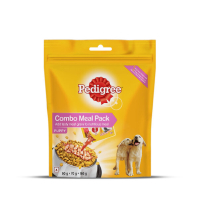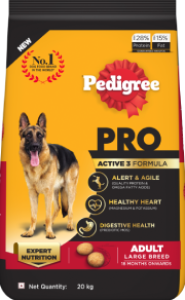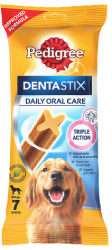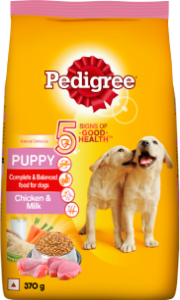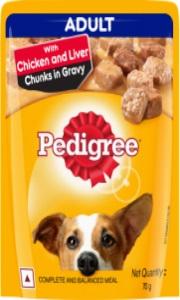
Error message
In this section
First Aid for Your Pet
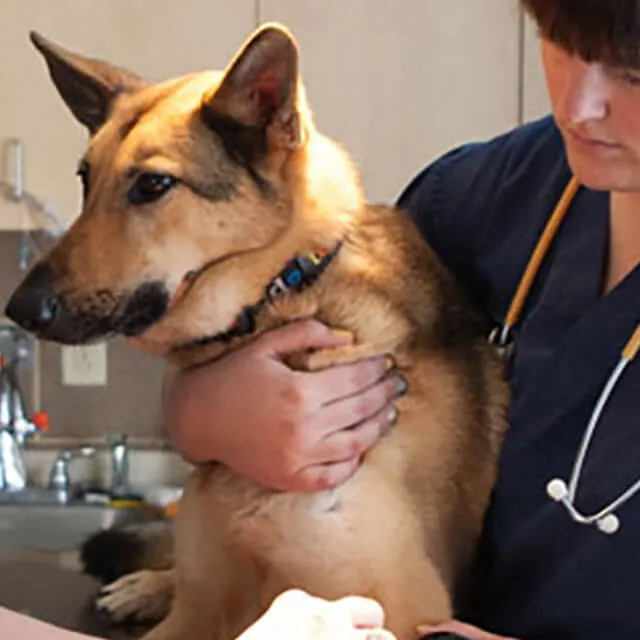
share:
When it comes to medical treatment, seconds and minutes can sometimes make a big difference towards recovery. Take a few minutes to read up on canine first aid.
In case of emergencies, always contact your vet first.
Know your dog's vital signs
Normal temperature: 101°–102.5°F
Normal heart rate: 70–160 beats/min
Normal breathing rate: 10–30 breaths/min
When assessing for vital signs:
- Don't assume your dog won't bite.
- Use rectal, not oral, thermometers.
- Check the heart rate by placing your hand over his chest, just behind his elbow.
- Measure his breathing rate by observing your dog's sides or by holding your wet finger in front of the nose.
- Measure both rates for 15 seconds and multiply by 4 to get the rate per minute.
Here’s how to tackle the emergencies with first aid:
Bleeding
Possible cause: Car accident, animal fight, fall, clotting, severe wound.
What to do: Arterial bleeding is a life-threatening situation. Arterial blood is bright red, bleeds in spurts, is difficult to stop, and requires immediate veterinary attention.
For any type of external bleeding, place a clean cloth or sterile gauze over the injured area. Apply direct pressure for at least 5–7 minutes. Take your dog to a vet immediately.
Vomiting
Causes: Poisoning, abdominal injury, motion sickness, disease, overeating, fear, brain injury, parasites.
What to do: Examine vomit for blood or other clues and take a sample to your vet for an evaluation. Bring a sample of the suspected poison (preferably in its original packaging) to the vet. Do not offer any food or water until a vet.
Heatstroke
Possible causes: Excessive heat and/or lack of shade, heavy exertion, lack of water (Note: Heat tolerance may differ for different dogs).
What to do: Take your dog to a cool, shaded area. Immediately bathe with tepid (not cold) water. Do not leave your pet unattended and monitor his rectal temperature. Dry him when his temperature drops to 103°F. Excessive cooling down may be harmful. Take him to a vet immediately if his temperature is 104° F or above.
Limping
Possible causes: Broken limb or toe, arthritis, injury to footpad, dislocation, sprain, muscle soreness or a bur between his toes.
What to do: If you suspect a fracture, gently stabilize the limb before you transport the dog to the vet. Cover any wounds with a clean cloth.
Bee or wasp sting
For bee stings, apply a paste of baking soda and water. For wasp stings, apply vinegar or lemon juice. Also apply a cold pack and follow up with calamine or antihistamine cream. Severe swelling or breathing requires immediate medical attention.
Choking
Possible causes: Foreign objects lodged in his throat, windpipe or teeth; or an allergic reaction.
What to do: Gently and carefully pull the dog's tongue forward and inspect his mouth and throat. Make sure he doesn't try to bite you. Stop if he is not cooperative. If you see a foreign object, hold the mouth open and attempt to remove it by hand, or with tweezers or small pliers. Take care not to push the object farther down the throat. Stop if the dog is not cooperative and immediately take him to a vet. If he’s not breathing, start CPR.
Unconsciousness
Possible causes: Drowning, electrocution, trauma, drug ingestion.
What to do: In case of drowning, remove fluid from the dog's lungs by lifting his hindquarters high over his head and squeezing his chest firmly until fluid stops coming out. In case of an electrical shock, DO NOT touch pet until it is no longer in contact with the electrical source. If an object is blocking the dog's windpipe, it will need to be gently removed. See ""Choking"" above. Take the dog to a vet as soon as possible.
If he is not breathing and has no heartbeat, start CPR.
CPR
Note:If possible, have someone transport you and your dog to a vet while you perform the CPR procedure described below. Lay the dog on his side and remove any objects from his windpipe: open his mouth, pull his tongue forward, extend his neck, and sweep his mouth with your finger. Be careful: make sure your dog won't try to bite you. If the windpipe and mouth are clear, extend the neck, hold his tongue out of his mouth, and close the dog's jaws over his tongue. Holding his jaws closed, breathe into both nostrils for 5 to 6 breaths. If there is no response, continue artificial breathing.
Artifical Breathing
Over 60 lbs. = 12 breaths/min
Over 60 lbs. = 12 breaths/min
1–10 lbs. = 30+ breaths/min
If there is no heartbeat, begin heart compressions. Depress chest 1.5 to 3 inches with one hand on either side of the chest, just behind the elbows. Continue artificial breathing.
Heart Compressions
Over 60 lbs. = 60 times/min
11–60 lbs. = 80–100 times/min
5–10 lbs. = 120–140 times/min
If your pet weighs 5 lbs. or less, place hands around rib cage and apply heart massage.
Handling and transporting tips
Don't try to comfort an injured dog by hugging it, and never put your face near its head. If necessary, muzzle the dog with gauze, soft towel strips, or stockings. Don't attempt to lift or drag a large, injured dog. Instead, improvise a stretcher with a board, throw rug, blanket, child's toboggan, etc. Before transport, try to stabilize injuries. Rolled magazines or newspapers can serve as splints. Pad the limb and splint generously with rolled cotton and gauze, or improvise with pillows, strips of blanket, towels, etc.
Helpful items to have on hand
- Gauze pads, gauze rolls, rolled cotton, and veterinary self-adhesive elastic wrap
- Calamine lotion and petroleum jelly
- Thermometer
- Blunt-end scissors (to cut bandages or cat fur away from a wound)
- Tweezers and pliers
- Antibiotic cream and antiseptic solution
- Extra blankets, towels, and pillows
- Eyedropper
- Tube socks (for slipping over an injured paw)
- Transport aids, like crates and carryalls. A child's plastic toboggan or flat piece of board can be used to carry a larger dog.
- Cotton swab sticks
A few important things to remember:
First aid is often just that, the aid you do first, before taking the injured dog to a veterinarian for more extensive treatment. We also recommend that you print out this information and keep it handy. Just in case.
Review this article:




